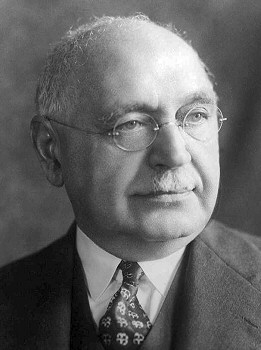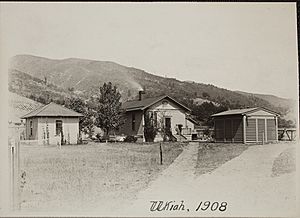Frank Schlesinger facts for kids
Quick facts for kids
Frank Schlesinger
|
|
|---|---|
 |
|
| Born | May 11, 1871 |
| Died | July 10, 1943 (aged 72) |
| Nationality | American |
| Alma mater | Columbia University |
| Known for | Yale Bright Star Catalogue |
| Awards | Valz Prize (1926) Gold Medal of the Royal Astronomical Society (1927) Bruce Medal (1929) |
| Scientific career | |
| Fields | astronomy |
| Institutions | Yerkes Observatory |
Frank Schlesinger (born May 11, 1871 – died July 10, 1943) was an important American astronomer. He was known for using photographic plates, like old-fashioned camera film, to study stars. This was a new and exciting way to do astronomical research at the time.
Contents
Frank Schlesinger's Early Life and Education
Frank Schlesinger was born in New York City in 1871. He went to public schools there and later graduated from the College of the City of New York in 1890. After working as a surveyor for a while, he became a special student in astronomy at Columbia University in 1894.
He earned a special scholarship in 1896, which allowed him to study astronomy full-time. He received his PhD degree in 1898. After finishing his studies, he spent a summer helping out at the Yerkes Observatory.
Pioneering Photographic Astronomy
In 1898, Schlesinger worked at the International Latitude Observatory in Ukiah, California. From 1899 to 1903, he was an astronomer at Yerkes Observatory. Here, he started using photographic methods to measure how far away stars are. This measurement is called parallax.
Instead of just looking through a telescope, he would take pictures of the stars. By comparing photos taken at different times of the year, he could figure out the tiny shift in a star's position. This shift helps astronomers calculate its distance from Earth. This method was much more accurate than older ways of measuring.
Leading Observatories and Star Catalogues
Frank Schlesinger became the director of the Allegheny Observatory in 1903 and stayed there until 1920. Later, he led the Yale University Observatory from 1920 to 1941.
At Yale, he worked closely with another astronomer named Ida Barney. Together, they created and published the famous Yale Bright Star Catalogue. This huge project listed many stars and their positions, helping astronomers for decades. The first part of this work was published in 1925, and the entire project finished in the 1980s.
Schlesinger made major contributions to a field called astrometry. This is the science of measuring the positions and movements of stars and other celestial objects. He was also a leader in the astronomy community. He served as president of the American Astronomical Society and the International Astronomical Union.
Awards and Special Recognition
Frank Schlesinger received several important awards for his work:
- The Valz Prize from the French Academy of Sciences (1926)
- The Gold Medal of the Royal Astronomical Society (1927)
- The Bruce Medal (1929)
Two celestial objects are named after him to honor his contributions:
Frank Schlesinger's Family Life
Frank Schlesinger married Eva Hirsch in 1900. They had one son, Frank Wagner Schlesinger, who also became involved in astronomy, directing planetariums in Philadelphia and Chicago. After his first wife passed away in 1928, Frank Schlesinger married Katherine Bell (Rawling) Wilcox in 1929.
See also
 In Spanish: Frank Schlesinger para niños
In Spanish: Frank Schlesinger para niños


